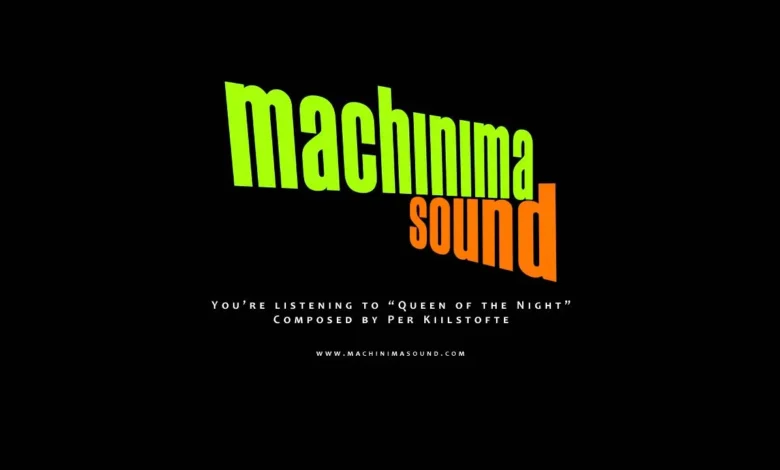SND316X: Exploring the Fantasy Sound Chip & SoundFont Project

“SND316X” is an intriguing name that shows up in niche audio development and chiptune / retro synthesis communities, particularly in connection with soundfonts, fantasy sound chips, and digital music experimentation. Despite limited documentation in mainstream tech sources, what is available paints a picture of an imaginative, creative audio project. In this article, we’ll cover:
-
Origins & Concept of SND316X
-
SoundFont Manifestations & Versions
-
Technical / Artistic Features & Design Goals
-
Community & Usage in Music / Chiptune
-
Limitations, Criticism & Challenges
-
Future Potential & What to Watch For
Origins & Concept of SND316X
The earliest clear references to SND316X appear in soundfont / sample library communities and “fantasy chip” experimentation threads. A key version is hosted on Musical Artifacts as a “RCKTNEO SND316X soundfont” project.
The project description suggests that SND316X is a fictional sound chip, not a real vintage hardware IC. One developer notes that they used BeepBox presets (a browser-based chiptune sequencer) as starting points and modified them to suit the chip’s imagined specifications.
This positions SND316X more as a fantasy or “retro-inspired” audio architecture, intended for creative exploration rather than historic reproduction. It’s part of a broader trend in the chiptune community to invent new “retro” sound chips for fresh textures, beyond merely emulating known old hardware (SID, YM, SPC, etc.).
Thus, SND316X exists at the intersection of audio art, conceptual design, and sample library work rather than mass-market hardware or DSP products.
SoundFont Manifestations & Versions
The main way SND316X is realized is through SoundFont files—digital sample/instrument banks used in software synths, trackers, and DAWs.
RCKTNEO SND316X Full Version
On Musical Artifacts, there is a “RCKTNEO SND316X soundfont (full V1.0)” listing. It includes multiple sections (drums, PCM samples, etc.) and notes that “GM positions fixed” among updates.
This version is intended for general use in MIDI software, giving composers access to a curated set of timbres and sample instruments that align with the fictional SND316X’s aesthetic.
Beta / Alternate Versions
Another listing is a beta version of the same soundfont. In its description, the creator clarifies that SND316X is a planned / fictional chip and that parts of the sample design started from BeepBox presets which were then altered
These alternate versions may include different sample sets, experimental patches, or incomplete features. They allow the community to preview design directions or help test compatibility.
Versions & Updates
The descriptors suggest a version progression (beta → v1.0, etc.). Developers also seem to fix General MIDI (GM) mappings in subsequent versions. The “GM positions fixed” note suggests the soundfont’s instruments are mapped to standard MIDI instrument slots for easier integration.
Thus, SND316X exists primarily as a virtual instrument / sample library rather than as physical hardware.
Technical / Artistic Features & Design Goals
Though not a real chip, the SND316X project attempts to adopt certain design principles and creative constraints to mimic or evoke a retro sound architecture. Here are inferred features and goals:
Retro / Chiptune Aesthetic
By leaning on BeepBox presets and low-bit / synthesized timbres, the soundfont aims to evoke classic chip sounds—square waves, simple envelopes, lo-fi fidelity, etc. This aesthetic is beloved in chiptune, game music, and retro synthesis circles.
Modularity & Genre Sections
The full version includes multiple “sections,” including drum kits and PCM sample sets. This suggests that the SND316X architecture (in concept) supports both synthesized voices and sample playback channels
GM Compatibility
By aligning instrument patches to General MIDI (GM) slots, the designers make it easier for users to drop the soundfont into standard MIDI files or instrument banks without remapping everything. This lowers the integration barrier for composers.
Custom Mapping & Patching
Some versions likely allow custom patch mapping, adjusting instrument velocity curves, filter envelopes, or oscillator types. While I didn’t find explicit documentation, these features are common in SoundFont / virtual instrument design, and likely part of SND316X’s flexibility.
Hybrid Synthesis + Sample Approach
Because the soundfont includes PCM samples, it’s not purely synthesized. This hybrid approach gives more expressive sonic palette, combining “chip-style” waveforms with sampled textures for percussion or ambient layers.
Given its “fictional chip” frame, the design goal is imaginative consistency: giving composers a cohesive, self-consistent sonic palette, not a random mash of samples.
Community & Usage in Music / Chiptune
SND316X has been adopted by a niche but engaged community of digital musicians, chiptune composers, and hobbyist sound designers. Some indicators:
-
A YouTube video titled “Highway 1008 (Oscilloscope View)” credits “rcktneo for the snd316x and snd316y fantasy chips.”
-
Another video listing attributes its soundfont use to “SND316X soundfont v2.5” in a musical project.
These uses show that musicians are employing SND316X in actual compositions, pairing it with visuals, oscilloscopes, and retro musical contexts.
Because the chip is fictional, its adoption is artistic rather than technical: it gives creators a “new old” toolkit. Users can embed SND316X in MIDI compositions, trackers, DAWs, or game audio stacks, giving their work a novel but nostalgically flavored sonic identity.
The community likely shares patches, variant instruments, and performance tips, typical of open soundfont / chiptune ecosystems.
Limitations, Criticism & Challenges
As with many experimental or fictional sound architectures, SND316X faces some inherent constraints and criticisms:
Lack of Documentation / Specs
Because it’s not real hardware, SND316X does not come with formal technical datasheets, signal chain explanations, or electrical specs. This lack of formal specification can limit deeper emulation or deeper integration in software synth emulators.
Potential Redundancy vs. Existing Chips
One critique might be: why invent a new chip when many vintage sound chips already exist (e.g. SID, YM, SPC, NES APU)? SND316X must justify itself in terms of unique sonic fingerprint or usability.
SoundFont Format Limitations
SoundFont format has bounds—limited polyphony, memory constraints, limited real-time modulation compared to modern synth engines. So SND316X’s expressivity may be curtailed by host software or format restrictions.
Quality & Cohesion of Samples
Because samples originate (in part) from BeepBox presets, their sonic quality or consistency may vary. Some instrument patches may feel less polished or less realistic than high-end commercial sampled instruments.
Niche Interest & Discoverability
Being a niche project, SND316X may struggle to gain widespread adoption or visibility beyond chiptune circles. Without marketing, strong documentation, or backing, it risks being overlooked.
Scalability & Versioning
As more variants emerge (v1.0, v2.5, beta), managing version compatibility, bug fixes, patch migrations, etc., becomes a challenge for users relying on stable instrument sets.
Future Potential & What to Watch For
Even though SND316X is currently an experimental / community project, it has promising directions and potential growth paths:
Expanded Patch Libraries & Versions
We might see v2.0, v3.0 with new patches, extended drum kits, ambient layers, or more expressive modulation (LFOs, filters, envelopes).
Open Source / Collaborative Development
If the project embraces open licensing, more community contributors could build variant instruments, rewrite sample sets, or port to new synth engines.
Hardware Emulation & FPGA Implementations
Though fictional, one future route is to implement SND316X as a true hardware emulation (e.g. on FPGA or as a plugin chip that replicates the intended signal chain), bringing it closer to a real chip experience.
Integration into Game Audio / Indie Projects
Indie game developers or retro-styled multimedia creators might adopt SND316X as a signature audio identity—giving their work a fresh but retro sonic palette.
Cross-format Ports / Plugin Versions
Porting SND316X beyond SoundFont—into SFZ, VST instrument, or sample library formats—would broaden its usability in modern DAWs and integrate modulation possibilities.
Community Showcases & Demo Albums
As participants use SND316X in compositions, curated compilations or showcase albums can promote its sound and attract new users.
Conclusion
While SND316X does not denote a real vintage chip or commercial hardware, it is an imaginative and functional fantasy sound chip / soundfont project embraced by creative audio communities. Through virtual instrument releases, compositional use, and evolving versions, it offers a fresh dimension to retro and chiptune music production.




